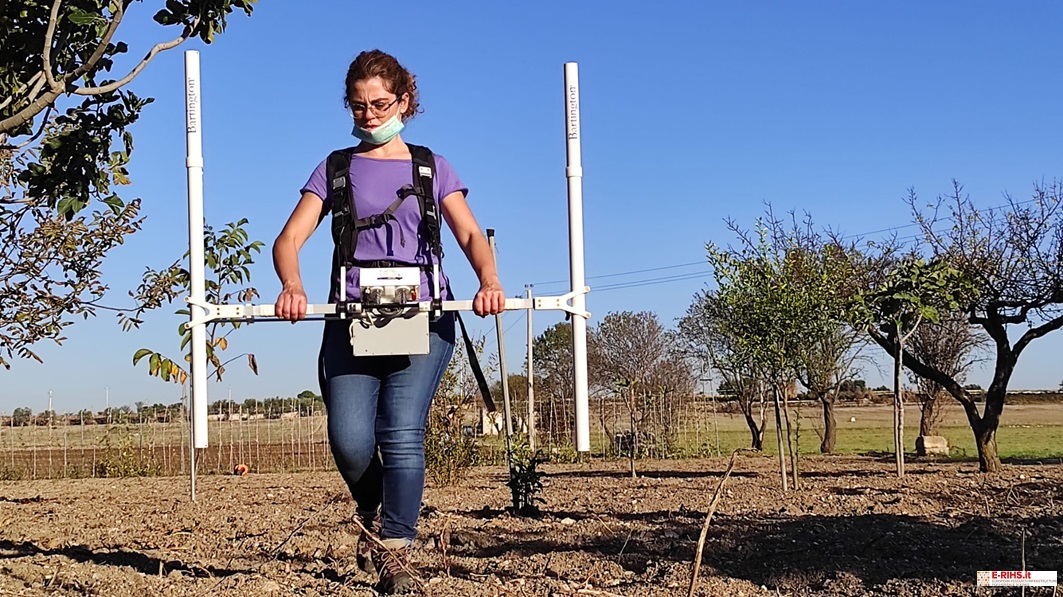
LABORATORY: CNR-ISPC
NAME OF THE INSTRUMENT
Gem 35 magnetic gradiometer with potassium atoms with gps
GENERAL DESCRIPTION
The gradiometer instrument available in MOLAB is used for several applications because it is extremely handy, fast, and completely non-invasive. The purpose of a magnetic survey is to investigate the structure of the subsoil based on the anomalies of the earth's magnetic field produced by the different magnetic properties of the materials present in the subsoil. The magnetic field that can be measured on the earth's surface varies significantly as a function of space and time. Numerical values are then measured referring to a precise spatial coordinate. Without such a reference, a group of values has no meaning. The instrument is normally moved along equidistant measurement lines, known as traverses, separated by a fixed distance, Δy. The data is acquired above these traverses at specific sampling intervals, Δx. A gradiometer is defined as an instrument by which the value of the gradient of the magnetic field, dB/dz, is sampled. The gradiometer is nothing more than a differential magnetometer, that is, it is equipped with two sensors separated by a fixed and small distance with respect to the distance of the source whose gradient you want to measure. To operate in this configuration, the two sensors must proceed to the sampling of B simultaneously.
TECHNICAL DESCRIPTION
High data quality is assured through the GSMP-35 magnetometer’s ultra-high sensitivity (0.0002 nT @ 1Hz). Ultra-sensitivity gives you the confidence to detect and characterize hidden targets with precision and confidence. It is a new era in magnetometry with the GSMP.
Referent:
Giovanni Leucci giovanni.leucci@cnr.it
